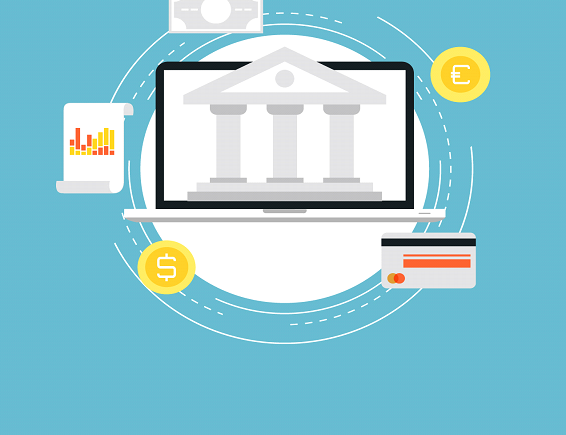In today’s interconnected digital world, the payment ecosystem plays a pivotal role in facilitating financial transactions, enabling commerce, and driving economic growth. From traditional banking systems to innovative fintech solutions, the payment landscape is comprised of various components that work together to ensure seamless transactions. In this article, we will explore the key components of the payment ecosystem, delve into the challenges faced by stakeholders, and discuss future trends shaping the industry.
Key Components of the Payment Ecosystem
Payment Infrastructure
At the core of the payment ecosystem lies the infrastructure that enables the transfer of funds between parties. This includes payment networks, such as Visa and Mastercard, which facilitate the routing and processing of transactions, as well as payment processors and acquirers that handle authorization, clearing, and settlement.
Payment Services
Payment services encompass a wide range of offerings provided by financial institutions, payment processors, and fintech companies. These services include card issuance, merchant acquiring, payment gateway solutions, mobile payments, digital banking solution, peer-to-peer transfers, and remittance services, among others.
Regulatory Framework
The payment industry is subject to a complex regulatory landscape aimed at ensuring consumer protection, financial stability, and market integrity. Regulatory bodies such as central banks, financial regulators, and card networks impose rules and standards governing payment activities, including anti-money laundering (AML), know your customer (KYC), data protection, and compliance requirements.
Market Participants
The payment ecosystem consists of various stakeholders, including banking system and banks, payment processors, merchants, consumers, fintech startups, and regulatory authorities. Each participant plays a unique role in the ecosystem, contributing to the smooth functioning of payment systems and the overall economy.
Challenges Facing the Payment Ecosystem
Below there are the multifaceted challenges facing the payment ecosystem today. By understanding these challenges and their implications, stakeholders can develop proactive strategies to address them effectively and ensure the resilience and security of payment systems. Join us as we explore the key challenges shaping the payment landscape and discuss potential solutions to overcome them in an increasingly digital and interconnected world.
Security Threats
One of the most significant challenges facing the payment ecosystem is cybersecurity threats, including data breaches, identity theft, and fraudulent transactions. As payment systems become increasingly digitized, they become more vulnerable to cyberattacks, requiring robust security measures to protect sensitive information and prevent unauthorized access.
Regulatory Compliance
Compliance with regulatory requirements poses a significant challenge for payment providers, as regulations vary across jurisdictions and are subject to frequent updates. Ensuring compliance with AML, KYC, GDPR, PCI DSS, and other regulations requires dedicated resources and expertise, placing a burden on businesses operating in multiple markets.
Technological Innovation
While technological innovation presents opportunities for enhancing payment services and user experiences, it also introduces challenges related to interoperability, scalability, and legacy system integration. Fintech startups and established players must navigate a rapidly evolving technological landscape to stay competitive and meet customer expectations.
Future Trends in the Payment Ecosystem
Below we will delve into the emerging trends that are poised to redefine the payment ecosystem in the coming years. By understanding these trends and their implications, businesses and stakeholders can stay ahead of the curve and capitalize on the opportunities presented by a rapidly evolving digital economy. Join us as we navigate the future of payments and explore the innovations that are driving the industry forward.
Contactless Payments
The adoption of contactless payment methods, including NFC-enabled cards, mobile wallets, and wearable devices, is expected to continue growing, driven by convenience, speed, and hygiene considerations.
Blockchain and Cryptocurrency
Blockchain technology and cryptocurrencies hold the potential to revolutionize the payment ecosystem by enabling faster, cheaper, and more transparent transactions. This will be fueled by innovations like stablecoins, whose value is pegged to traditional assets, making them more user-friendly for everyday transactions. For instance, the USDT price has remained relatively stable compared to other cryptocurrencies, offering a more predictable option for international money transfers. As blockchain adoption expands, we can expect to see increased use of cryptocurrencies for cross-border payments, remittances, and peer-to-peer transfers.
Biometric Authentication
Biometric authentication methods, such as fingerprint scanning, facial recognition, and voice authentication, are gaining traction as secure alternatives to traditional passwords and PINs. Biometric authentication enhances security and user convenience, reducing the risk of fraud and unauthorized access.
Open Banking
The emergence of open banking initiatives and API-based platforms is driving greater collaboration and innovation within the payment ecosystem. Open banking enables third-party developers to access bank data and services, fostering the development of new payment solutions, personalized financial services, and enhanced customer experiences.
Conclusion
As the payment ecosystem continues to evolve, stakeholders must adapt to technological advancements, regulatory changes, and shifting consumer preferences. By understanding the key components of the payment ecosystem, addressing common challenges, and embracing future trends, businesses can position themselves for success in an increasingly digital and interconnected world.


